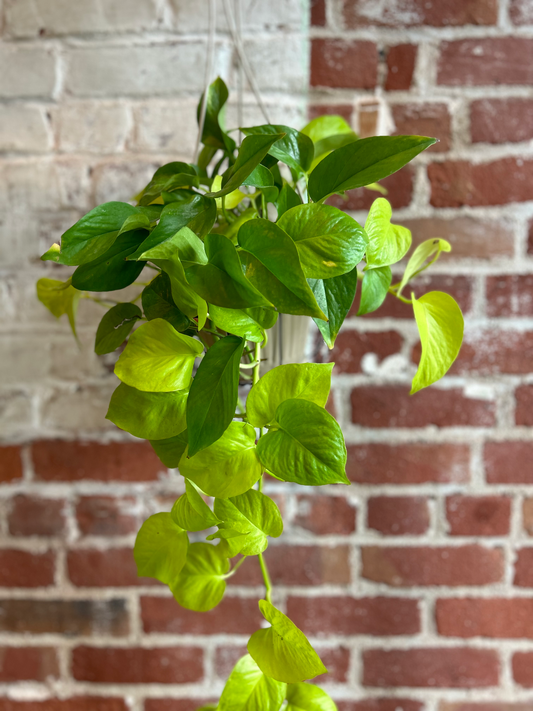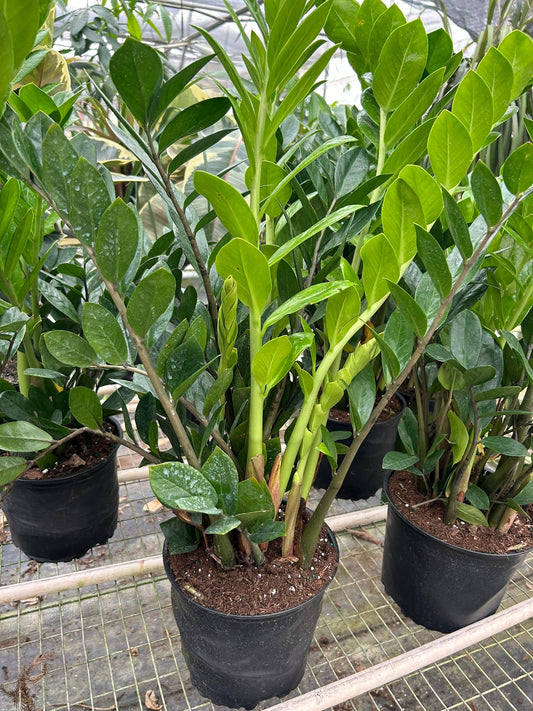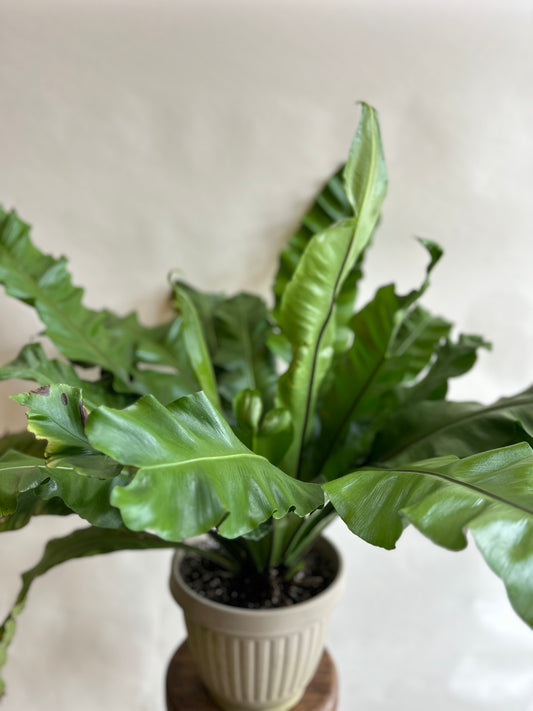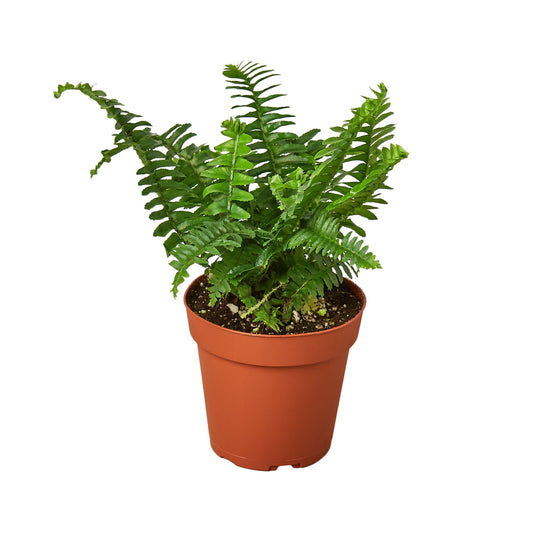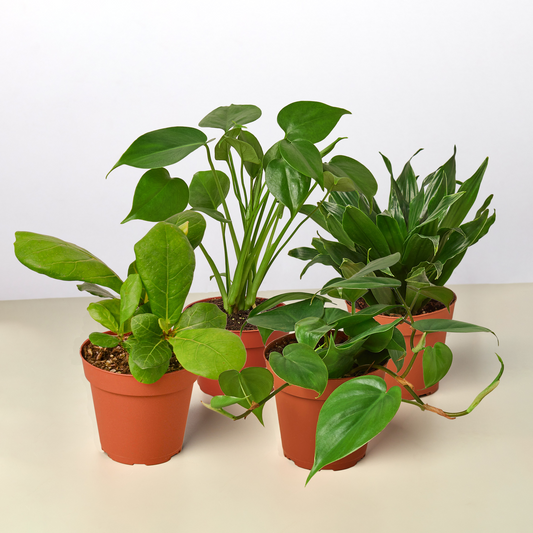Are Aluminum Plants Toxic to Cats?
Cafe Planta Team
When it comes to creating a plant-friendly home, one of the first things many of us consider is our furry friends. Cats, with their curious nature, often end up nibbling on houseplants, which raises an important question: Are aluminum plants toxic to cats?
In this article, we're going to explore this topic by looking into the characteristics of aluminum plants, their potential effects on cats, and how to keep your feline friends safe around houseplants. We'll also cover some helpful tips on plant selection and care, ensuring both your plants and pets live harmoniously.
Understanding the Aluminum Plant
The aluminum plant, scientifically known as Pilea cadierei, is a popular choice among plant lovers for its striking foliage. It's characterized by its unique silver stripes across dark green leaves, giving it a metallic sheen—hence the name "aluminum plant." This eye-catching plant is native to Vietnam and typically thrives in a humid environment.
Aluminum plants are relatively easy to care for, which makes them a great option for both new and seasoned plant parents. They prefer bright, indirect light and require regular watering to keep the soil moist but not soggy. This balance is key to maintaining their lush appearance.
But what about our cats? As much as we adore our houseplants, our feline companions' safety is paramount. Let's look at whether this plant poses any risks to your curious kitty.
Are Aluminum Plants Toxic to Cats?
The good news for cat owners is that aluminum plants are non-toxic to cats. This means that if your feline friend decides to take a nibble, it's unlikely to cause any serious harm. However, "non-toxic" doesn't necessarily mean "harmless." Even non-toxic plants can cause mild digestive upset if ingested in large quantities.
Symptoms of mild plant ingestion in cats can include drooling, vomiting, or diarrhea. While these symptoms are usually not severe with aluminum plants, it's still wise to monitor your pet if you suspect they've been munching on your greenery.
To be on the safe side, if your cat is known to chew on plants, you might want to consider placing aluminum plants out of reach or opting for a more decorative approach, such as hanging baskets or elevated shelves.
Creating a Cat-Friendly Plant Environment
Creating a home that's both plant-filled and cat-friendly involves a bit of strategic planning. Here are some tips to help you achieve that balance:
- Choose non-toxic plants: Besides aluminum plants, consider other non-toxic options like spider plants, Boston ferns, and African violets.
- Use hanging planters: Elevate your plants to keep them out of reach of inquisitive paws.
- Provide cat-safe alternatives: Offer your cat their own greenery, such as cat grass or catnip, to satisfy their chewing instincts.
- Monitor plant placement: Ensure plants are in stable pots and positioned securely to prevent tipping over.
By implementing these strategies, you can enjoy the beauty of houseplants without compromising your cat's safety.
Why Cats Are Attracted to Houseplants
Cats have a natural curiosity that often leads them to investigate houseplants. But why are they so drawn to them? There are a few reasons:
First, the texture and movement of leaves can be enticing, mimicking the prey they would chase in the wild. Additionally, some cats might be attracted to the taste or smell of certain plants, which can prompt them to nibble.
Sometimes, it's simply a matter of boredom. Cats are playful creatures, and if they're not sufficiently entertained, they might turn to your plants for amusement. Ensuring your cat has plenty of toys and interactive playtime can help divert their attention from your greenery.
Houseplant Care Tips for Cat Owners
Having cats and houseplants in the same home might seem challenging, but with a few tricks up your sleeve, you can manage both successfully. Here are some plant care tips specifically for cat owners:
- Regular Inspection: Check your plants for signs of chewing or damage regularly. This will help you spot any potential issues early.
- Safe Placement: Keep plants on higher shelves or use hanging planters to keep them out of reach.
- Pet Deterrents: Use natural deterrents like citrus peels or sprays to keep your cat away from plants. Cats typically dislike the smell of citrus.
- Positive Reinforcement: Reward your cat with treats when they choose their toys over plants, reinforcing good behavior.
With these tips, you can maintain a thriving plant collection while ensuring your feline friend stays safe and happy.
Dealing with Common Plant Problems
Even with the best intentions, plant problems can arise. Whether it's pests or fungal issues, it's important to address them promptly to keep your plants healthy.
For common pests like spider mites or aphids, a simple solution of water and dish soap can often do the trick. Spraying this mixture on affected leaves can help eliminate these pesky invaders without resorting to harsh chemicals.
Fungal issues, such as powdery mildew, can be more challenging. Ensuring proper air circulation and avoiding overwatering are key preventative measures. If you do encounter mildew, try using a mixture of baking soda and water as a natural remedy.
Remember, healthy plants are more resilient to pests and diseases, so regular maintenance is your best defense.
Incorporating Plants into Home Design
Houseplants do more than just purify the air—they also bring life and beauty into your living space. When incorporating plants into your home design, consider both aesthetics and practical placement.
Think about the lighting in each room. Bright, indirect light is ideal for many houseplants, but some, like snake plants, can tolerate lower light conditions. Group plants with similar light and water needs together to simplify care.
Use plants to accentuate design elements. Tall plants can fill empty corners, while trailing plants add interest to shelves. You can also use plants as natural dividers in open-plan spaces, creating distinct zones without the need for walls.
With a bit of creativity, you can transform any room into a green oasis that both you and your cat will love.
Choosing the Right Plants for Your Home
When selecting plants for your home, it's important to consider your living environment and lifestyle. Here are some factors to keep in mind:
- Light Levels: Assess the available natural light in your home. Some plants thrive in bright, direct sunlight, while others prefer shaded areas.
- Space: Consider the size of your living space. Large plants can make a statement in spacious rooms, while smaller plants suit compact areas.
- Care Requirements: Be honest about the level of care you're willing to provide. If you're often busy, opt for low-maintenance plants like succulents or ZZ plants.
- Pet Safety: Always check the toxicity of plants if you have pets, ensuring they are non-toxic options like the aluminum plant.
By considering these factors, you can select the perfect plants that fit both your home and your lifestyle.
Final Thoughts
To wrap up, while aluminum plants are non-toxic to cats, it's always a smart move to keep an eye on your curious companions. With a little planning, you can create a home that's safe and inviting for both your plants and pets.
At Cafe Planta, we're passionate about helping you care for your plants and create beautiful spaces. Whether you're looking for new additions to your plant family or need some expert advice, we're here to help. Feel free to reach out to us via email or our Instagram. Let's grow together and create a thriving plant collection in your home!


